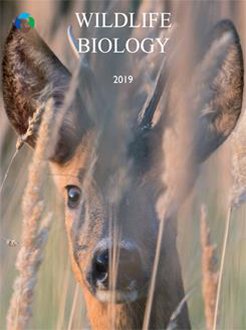The caracal Caracal caracal is the largest of Africa's small felids (<20 kg). Across much of Africa, particularly where larger predators have been extirpated, caracal are one of the main carnivores contributing to livestock predation. Caracal dietary studies are outdated, typically have small sample sizes and have mainly relied on scat analysis. We used a combination of scat analysis (n = 250 scats) and GPS cluster visitation (n = 458 clusters visited; n = 91 clusters with feeding events) to estimate caracal diet in South Africa's Succulent Karoo, a global biodiversity hotspot. Based on both methods, rock hyrax Procavia capensis was the caracal's main prey. Small mammals accounted for 25.3% of total biomass consumed by caracal using scat analysis, however, were absent based on GPS cluster investigations. Domestic sheep Ovis aries biomass consumed was much higher (59.5%) when inferred from GPS cluster visitation than from scats (5%). Wild medium-to-large mammalian prey had little variation between the two methods. GPS telemetry did not enable detection of small prey (<1 kg) and possibly over-represented large prey items, including livestock. Scat analysis provided a broader representation of caracal diet, but scat investigations could have underestimated larger prey since caracals ingest only small amounts of hair from large-bodied animals. We recommend a combination of GPS cluster visitation and scat analysis to determine the diet of caracal and other mesocarnivores across a range of prey sizes.
How to translate text using browser tools
29 October 2019
Determining the diet of an African mesocarnivore, the caracal: scat or GPS cluster analysis?
Corlé Jansen,
Alison J. Leslie,
Bogdan Cristescu,
Kristine J. Teichman,
Quinton Martins

Wildlife Biology
Vol. 2019 • No. 1
2019
Vol. 2019 • No. 1
2019
Caracal caracal
feeding ecology
mesocarnivore
predator–prey interactions
Prey composition
Succulent Karoo
trophic spectrum





